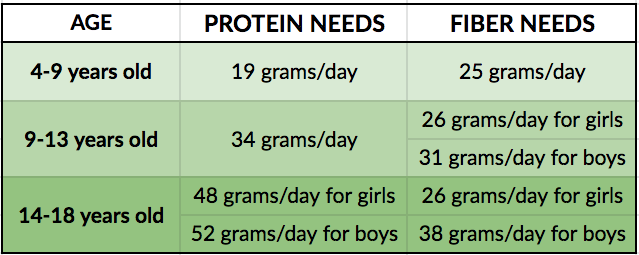5 of the most common follower questions—Answered.

Over the last few weeks, we have received hundreds of questions weekly about the in’s and out’s of success on F-Factor. Whether you’re getting started or a tried-and-true veteran, it’s likely a Q or two still pop into your head every once in a while. Here our Director of Nutrition, Amanda Karp, MS, RD, CDN answers the top 5 questions that have been on your mind lately…
Q #1: I’ve been on F-Factor for weeks, get my fiber, and drink 3L of water, and I haven’t lost a pound. What gives?
A: Stick with it! Likely there are a few little tweaks here and there that will help you get on the right track. I am going to answer your question with more questions.
Are you journaling? I used to joke with my clients that “I’m just not a person who journals” were always famous last words and almost predicted failure. Journaling is the #1 key to long-term success on F-Factor. Journaling not only keeps you accountable but functions as feedback so you can look back and pinpoint areas you could improve. Noticing you’re having more additional fat that step 1 allows (which is 30g, see question 3 for more detail), or that your protein portions are bigger than 3-4 oz at a meal if you’re a woman? Journaling helps you identify that so you can make adjustments weekly.
Are your portions too big? I already mentioned fat and protein because they are two essential nutrients that unfortunately can easily add up, especially because they don’t have carbs. When you journal, too much steak won’t set off alarms that you’re over your net carb count for the day, but that chicken WILL contribute more calories than you might realize. Do your best to stick to the prescribed amounts of protein and fat to keep you in that fat-burning zone. Finding it difficult to visualize your servings? 3-4 oz is protein is the size of a deck of cards and typically will fit in the palm of your hand. One additional fat serving looks like 6 almonds or cashews, 1 teaspoon oil, or 2 tbsp avocado. Take a look at what 1 tsp olive oil really looks like and it might surprise you!
Are you adding extra servings of “healthy” food? Fiber is ubiquitous now- it’s in everything from waters to candy. What I have found is that with the addition of these healthier alternatives comes the urge to add all of them into our diets. At the end of the day, these foods do still contribute calories and can still prevent weight loss, even though they do contain fiber. Be wary of adding too many “extras” into your day. If they don’t fit in as a snack, try to limit them to ~50 calories or less to ensure they don’t impede weight loss efforts.
And lastly, if you have a personal medical issue that may negatively affect weight loss efforts, you may require a more individual approach and I encourage you to work with one of our experienced private practice RDs.
Q #2) Is it safe to give my child F-Factor 20/20 FIBER/PROTEIN Powder?
A: Absolutely! F-Factor 20/20 Fiber Protein Powder contains both fiber and protein, two essential nutrients no matter your age. As you can see below, a 5-year-old child needs just as much fiber as a middle-aged woman! Children can be picky eaters, and 20/20 is a great, delicious way to sneak in some extra nutrition. It is important to recognize, however, that children have different nutritional needs than adults, and that these needs change often depending on age [i] [ii].

Use this chart as a guide to know how much protein and fiber your child needs based on age. Don’t forget, this is daily, not per meal, so your child doesn’t require nearly as much protein as you do. If you’re sharing a smoothie or pancakes, simply decrease their serving to better meet their needs and you can bulk fiber even more with fruits, veggies, grains, and legumes.
#3) When do I log fat and when is it included in my day?
A: F-Factor is a low-fat lifestyle, not a no-fat lifestyle. Fat is essential for health and not something we can or should completely eliminate, but it does contribute more calories than any other macronutrient. How do we account for that? On Step 1, you’re allowed up to 6 additional fat servings a day. Now the word additional is important because you are already getting fat from many other food sources without adding in any extra. Proteins, even lean ones, like cheese, meat, and fish, all contain fat. Even your FIBER/PROTEIN bar will contain a little fat. That is not counted in your additional fat.
Additional fat means fat added in addition to what is already built into Step 1. For example, if you put 2 tbsp. of avocado on your GG crackers or add 1 oz. full-fat cheese to your salad, that is additional fat. If you’re dining out, you can vet there’s about 2 tbsp oil used to cook your food and in your dressing. And how much should you “check off?” One serving is every 5 grams of fat. So if 1 tbsp. olive oil has 15 grams of fat, that’s three fat servings.
#4) How much 20/20 can I have in a day?
A: 20/20 is a healthy, nutritious, and delicious way to get 20 grams of fiber and protein in one shot. The answer to this question is highly individual. You might find that you don’t tolerate more than 2 scoops a day while your friend puts it in absolutely everything and feels great. Tolerance to fiber, and specific types of fiber like the soluble fiber in 20/20 powder, is very individual and depends on your digestive tract. Start slow, and remember that you must hydrate when increasing your fiber intake.
Our 20/20 Fiber Protein powder, while nutritious, does have calories and should not be viewed as an unlimited food on F-Factor. Stick to one serving at a time and remember that the protein does count toward your protein for a meal.
#5) When do I move on to Step 2?
A: You can move onto Step 2 whenever you’re ready, but know that step 2 may not lead to weight loss depending on many factors (your height, age, weight, gender, etc). Feel free to start slowly increasing your intake by one small carb and/or fat serving at a time as you start to near your weight loss goal.
Remember that Step 2 does not need to reach 75 grams of net carb. Some of your days might even still be under 35 grams of net carbs and some will be above. Start slow, one serving at a time, and you will figure out the right net carb level that works for you for weight maintenance. If you find that you gain a pound or two after a few too many higher net carb days, you can always go back to Step 1 for a few weeks.
[i] Children’s Health Team. “Why Extra Protein for Your Child Is Unnecessary – and Possibly Dangerous.” Health Essentials from Cleveland Clinic, Health Essentials from Cleveland Clinic, 17 Mar. 2020, health.clevelandclinic.org/why-extra-protein-for-your-child-is-unnecessary-and-possibly-dangerous/.
[ii]Children’s Health Team. “How Much Fiber Do Children Need?” Health Essentials from Cleveland Clinic, Health Essentials from Cleveland Clinic, 10 Mar. 2020, health.clevelandclinic.org/figuring-dietary-fiber-child-need/.